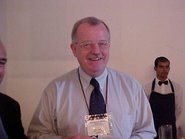 The meeting between government CEPA experts and journalists brought to light how easy the first group uses acronyms that unknown to the other group. Other jargon elements that needed explanation were: watershed, ecosystem, ecosystem services, invasives, in-situ and ex-situ. The CEPA toolkit contains glossaries that exlain such concepts. A joint brainstorm about what the essence of nature was brought to light that both groups share the same vision on the core brand values of biodiversity. It reminded me of the way of the way the German government branded biodiversity earlier this year. Asked to brainstorm about entry point for stories in the media showed differences: journalists could not do much with the (rather abstract) ideas of CEPA experts. The journalists had quite a list of good ideas for stories:
The meeting between government CEPA experts and journalists brought to light how easy the first group uses acronyms that unknown to the other group. Other jargon elements that needed explanation were: watershed, ecosystem, ecosystem services, invasives, in-situ and ex-situ. The CEPA toolkit contains glossaries that exlain such concepts. A joint brainstorm about what the essence of nature was brought to light that both groups share the same vision on the core brand values of biodiversity. It reminded me of the way of the way the German government branded biodiversity earlier this year. Asked to brainstorm about entry point for stories in the media showed differences: journalists could not do much with the (rather abstract) ideas of CEPA experts. The journalists had quite a list of good ideas for stories:* Progres report on implementation of CBD the challenges involved
* Impacts of development on biodiversity
* GMOs and its potential impacts on traditionally grown food
* GMOs and public health
* Impact of mining on forestry
* Examination of threatened species
* Impact of invasive species on the natural environment and livelihoods
* Economic impacts of degrading coral reefs.
The meeting made it clear how important it is to invest in personal relationships between government experts and journalists to generate mutual trust and respect. At the end Indi Mclymont, the workshop facilitator gave tips on how to deal effectively with the press. In the CEPA toolkit you can find more details on How to inspire the Press, how to work with the Mass Media.









No comments:
Post a Comment